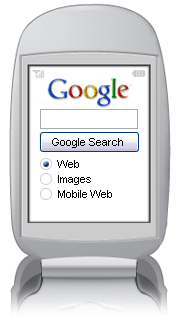London is to be the hub for mobile innovation for Google, Deep Nishar, Google’s director of wireless told Times Online. Mr Nishar has no doubts about the size of the global mobile market:
“You only have to look at the global trends for mobile use and PC use to see where our business is going,” said Mr Nishar. “In India, mobile-phone ownership outweighs PC ownership by a ratio of two to one. And there are five million more mobile-phone users coming online every month. By the end of this year there will be more mobile phones in India than in America.
In Britain there is one mobile phone for every person, while in some parts of Scandinavia mobile ownership is almost double that rate. “Looking at these numbers, it becomes very obvious that in the future people will want to access information on the web with a device they carry with them.

|
According to Mr Nishar, Google is reorganising the way it presents search results on the internet to conform better with mobiles. The research is badly needed as Google’s current mobile search service lags behind others in quality. Google’s biggest problem is that the mobile search index is not populated with native xhtml (WAP 2.0), mobile content, but rather by wap 2.0 translations of normal web pages. The resulting mobile content served from Google caches is poor to the point of unusable. Enclick provides mobile weather forecast service, which is one of only a handful in the world. Yet Google has trouble ranking and prioritizing a quality weather forecast in its mobile search, serving a cached translation of html content instead. |
It is time to move onto the full WAP2.0 standard.

